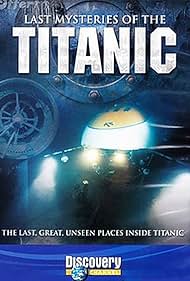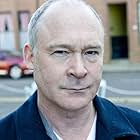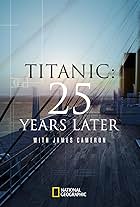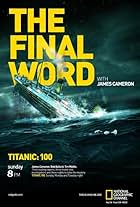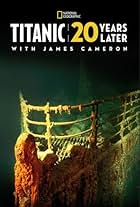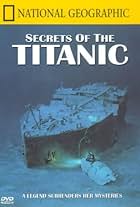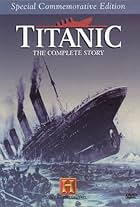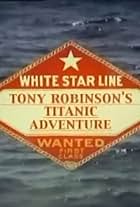In the Last Mysteries Of The Titanic DVD, Academy Award-winning director James Cameron leads a team of underwater explorers on a series of historic dives to document the remains of the world... Read allIn the Last Mysteries Of The Titanic DVD, Academy Award-winning director James Cameron leads a team of underwater explorers on a series of historic dives to document the remains of the world's most famous shipwreck. Using two, $20-million research subs, four mini-robots, a seaflo... Read allIn the Last Mysteries Of The Titanic DVD, Academy Award-winning director James Cameron leads a team of underwater explorers on a series of historic dives to document the remains of the world's most famous shipwreck. Using two, $20-million research subs, four mini-robots, a seafloor-to-satellite data system and a suite of the most advanced cameras and lights, Cameron's... Read all
Photos
- Lookout Frederick Fleet
- (archive footage)
- (as Scott G. Anderson)
- Self
- (as Mike Arbuthnot)
- Quartermaster Robert Hichens
- (archive footage)
- Lookout Lee
- (archive footage)
- 6th Officer Moody
- (archive footage)
- Self
- (as Dr. Lori Johnston)
- Violet Jessop
- (as Melanie Miller)
- 1st Officer William Murdoch
- (archive footage)
Storyline
Anyone who knows anything about the Titanic knows that she was not built for speed, and could not attempt to compete with the Cunard ships.
So what does that make the producers of this documentary? When a film leads off with such inaccurate, sensational balderdash, all that follows is suspect.
What follows is footage of a couple of snafus, including a dive aborted when the fiber optic cable fouls the submersible's prop. Submersible props that can't snag have been available since the 1990s, invented at HBOI; why didn't they use them? Then we see a "live" video feed of the ship with remarks by James Cameron that border on the inane. This is beginning to look like a snoozeville home movie.
It begins to get interesting with the mystery of the missing staircase. Cameron says he thinks it floated away with the sinking, and that's what began to happen on the movie set when it was flooded.
Next, Cameron talks about seeing the deck where the musicians played as the ship sank. Cue footage from his movie of ensemble playing. Did they actually continue playing to the end? "True or not," the narrator says, they were heroes. Are we trying to generate a fake controversy here? We then get a look at a lone piece of equipment on the bridge, Cameron's comments on the decision to turn the ship to port to try to avoid the iceberg, and more Titanic film footage of an actor turning the wheel.
Cameron is using some very small microsubmersibles he calls bots to enter the ship tethered by fiber optic lines. Finally we see some action with images of the radio room, interspersed with re-creations.
Next, the fanciest suite on the ship, which was now just lumps of mud, until Cameron finds the a clock on a mantle of the fireplace. This time we can really recognize features, and there is some color. This room was re-created in the movie, featured in the scene with Jack and Rose. We see a black and white picture of the actual cabin as reference. Mildly exciting.
Then the narrator returns to spouting nonsense, saying the Bruce Ismay "had personally requested" the captain to "push Titanic to her limit, in the hope of arriving early and making a huge media splash." The documentary then accuses Ismay of receiving a wireless warning personally of the iceberg danger, "which he put in his pocket and forgot" to show the captain.
Where did they get the "facts" for this documentary? The film, Titanic, of course! Cameron makes up a bogus account of the Titanic tragedy, puts it into a major film, the film then becomes the new reality, and it is used as the historical basis for Cameron's documentary. We then hear Cameron commenting on Ismay as a greedy businessman, echoing the theme of his pushing the speed of the ship. Yup, looks like Cameron actually believes his own fictional storyline, and is recycling it in the documentary.
Sorry, folks, but historians don't support any of this. That iceberg warning was shown to Ismay by the captain, who later retrieved it. And there is no evidence of any attempt to push the speed of the Titanic. Capt. Smith had changed to a much more southerly route, which he thought would avoid the icebergs, which is why he didn't slow the ship to a crawl.
They also make a big deal about lifeboat No. 1, which only had 12 occupants. "I've always puzzled over that," Cameron says. Well, Lawrence Beesley, a survivor, explains that in his book, "The Loss of the S.S. Titanic." Passengers, especially women, didn't want to get on the first lifeboats because they weren't convinced the ship would sink, and it was cold out there. Beesley said there was NO panic among passengers, even near the end. Unlike the movie. Mustn't let facts get in the way of a good story, right, Cameron?
Cameron brought several experts on the expedition, but most of what we hear in the first half is Cameron talking over his video feeds by recalling scenes from the movie (the new reality), plus the narrator. We hear more explanatory comments from the experts later on, but it is not terribly insightful. The highlight is the Turkish baths room, which is largely intact.
The title, Last Mysteries of the Titanic," seems a total disconnect with the documentary. What "last mysteries"? There are NO mysteries revealed here. But there are still plenty of mysteries buried with the ship. This seems more like Cameron's home movie of his trip to the Titanic, paid for with a tax credit by producing a quickie documentary.
Details
- Release date
- Country of origin
- Language
- Also known as
- Los últimos misterios del Titanic
- Production companies
- See more company credits at IMDbPro
Box office
- Budget
- $6,200,000 (estimated)
- Runtime44 minutes
- Color
- Aspect ratio
- 1.33 : 1
